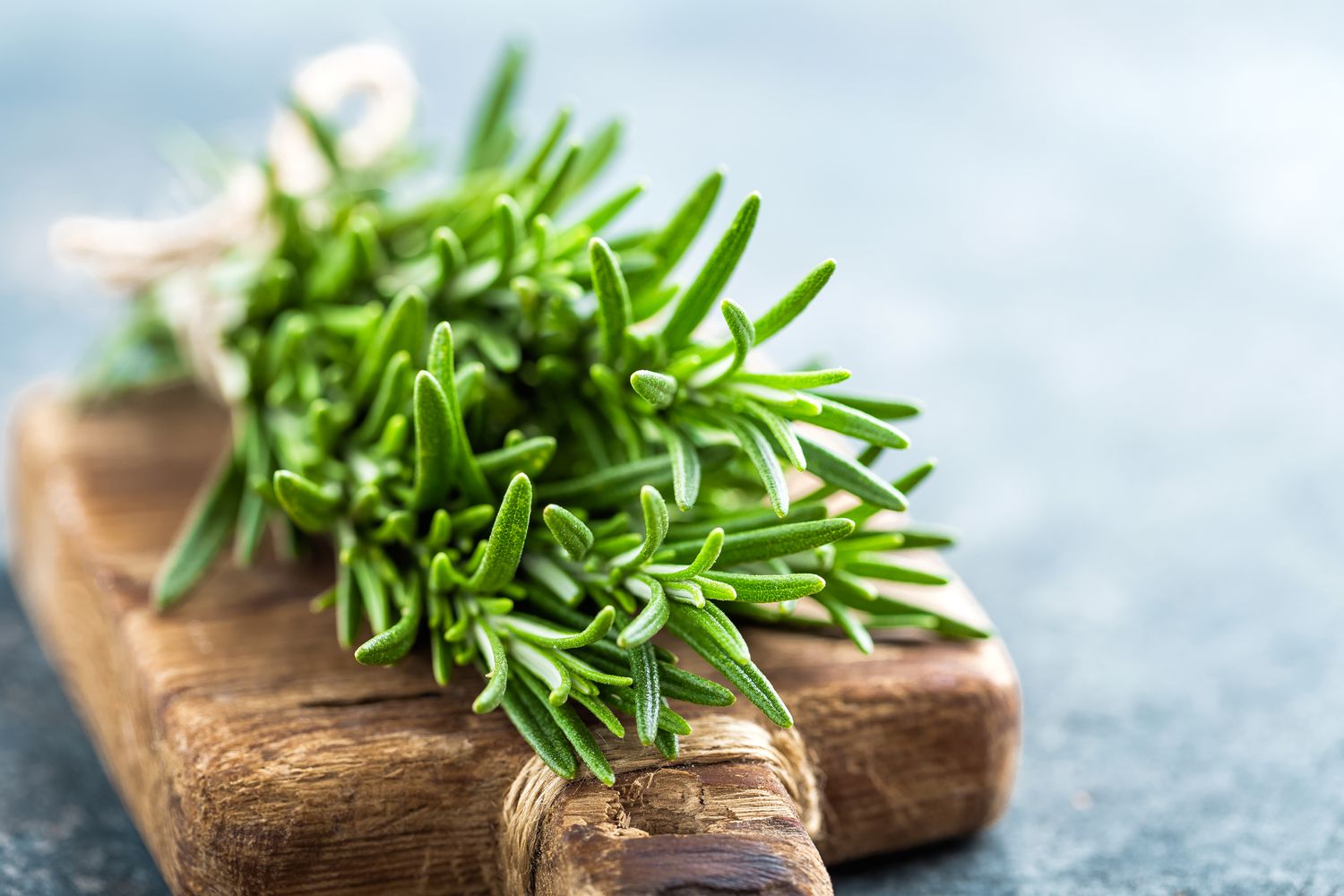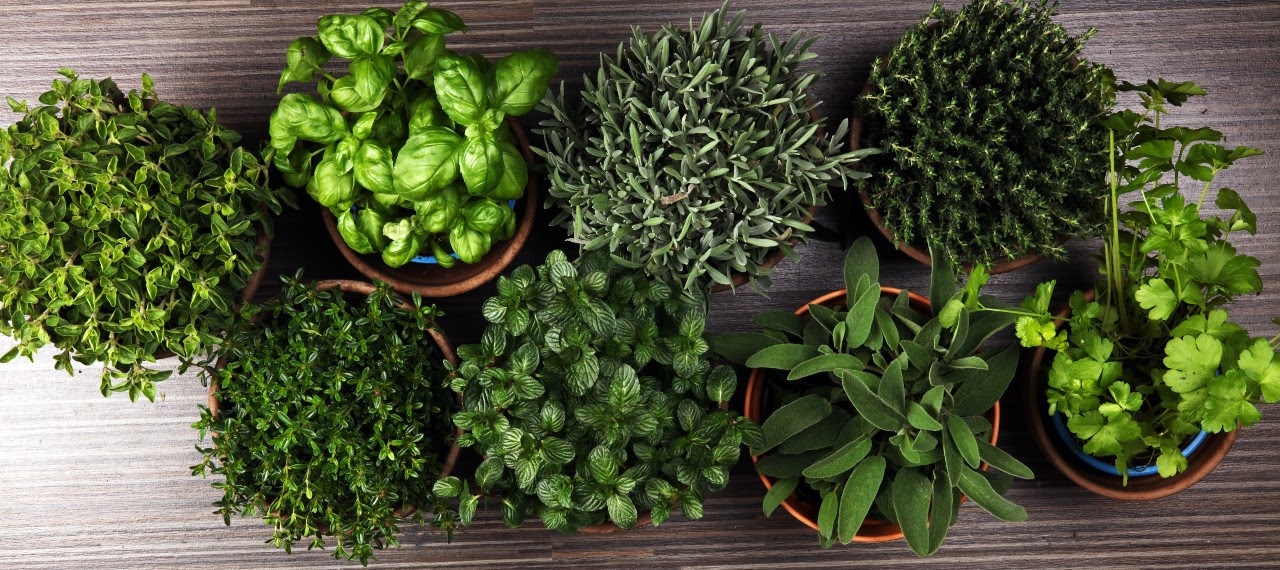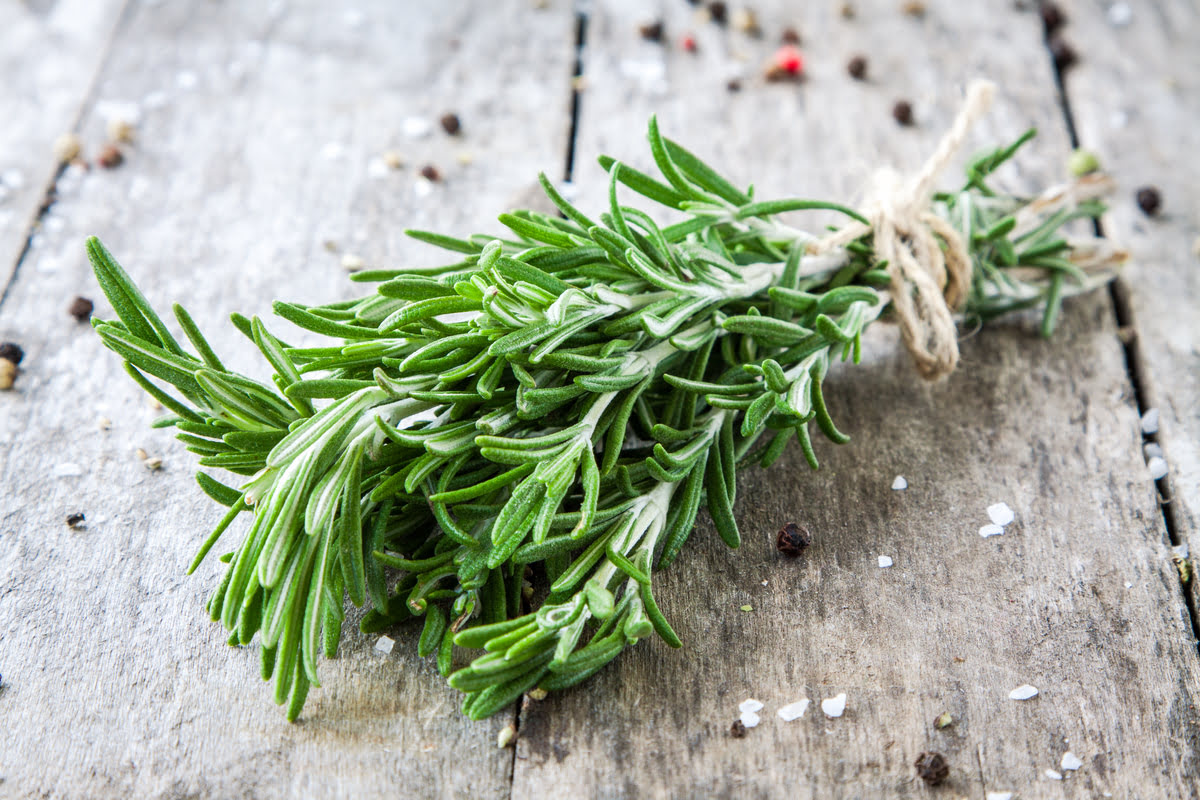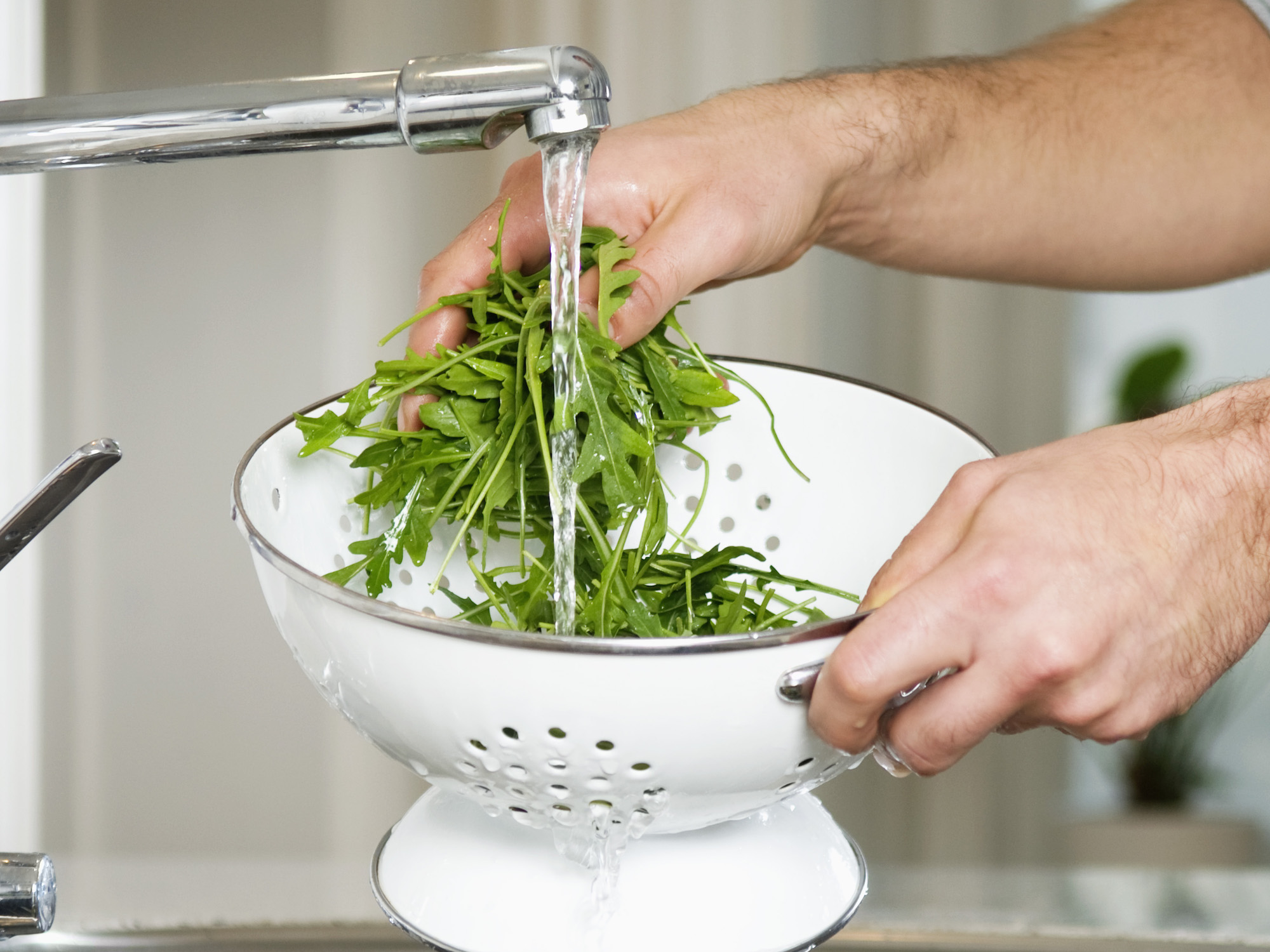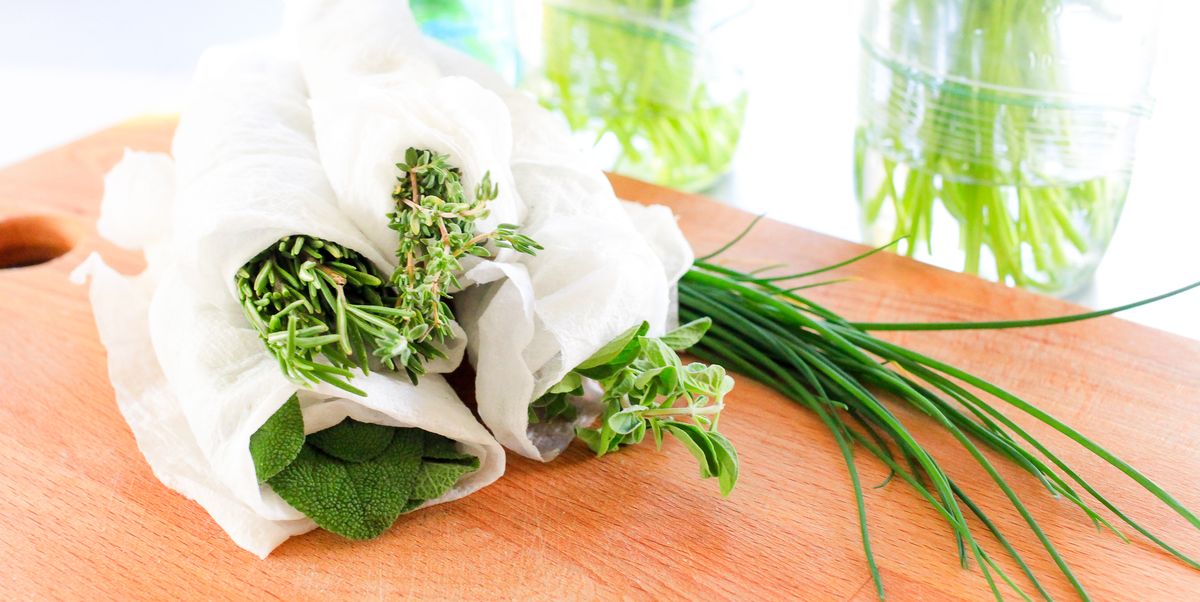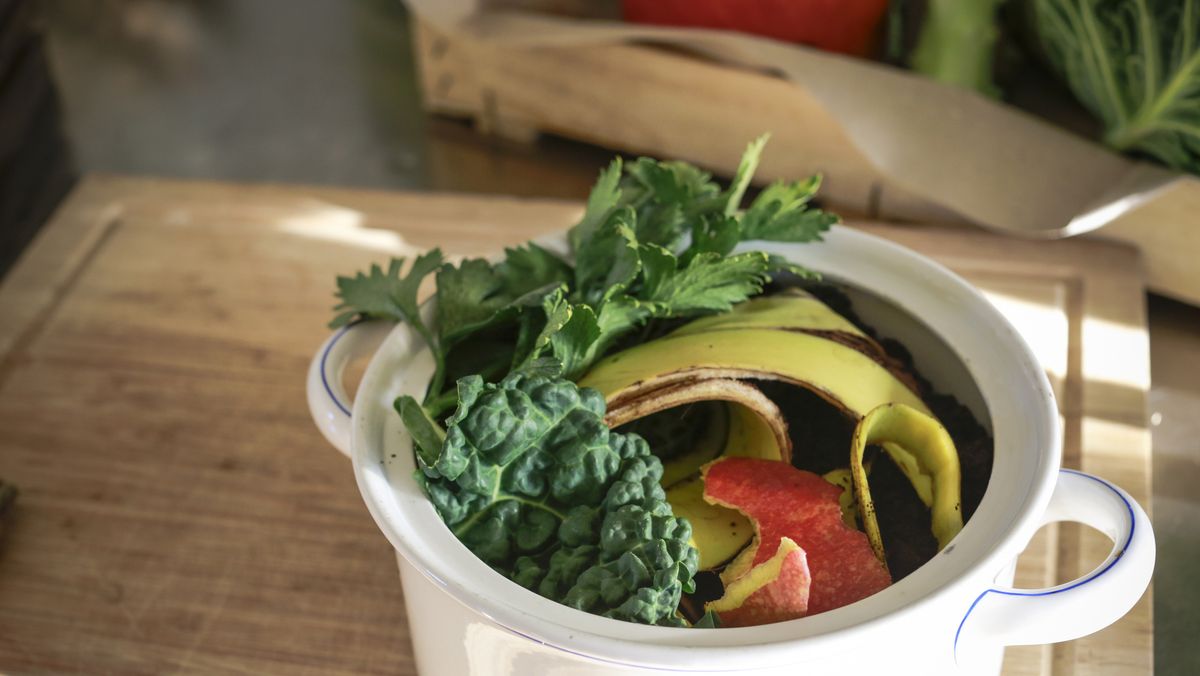Home>Gardening News and Trends>Latest News>How To Keep Vegetables Fresh Longer Without Fridge
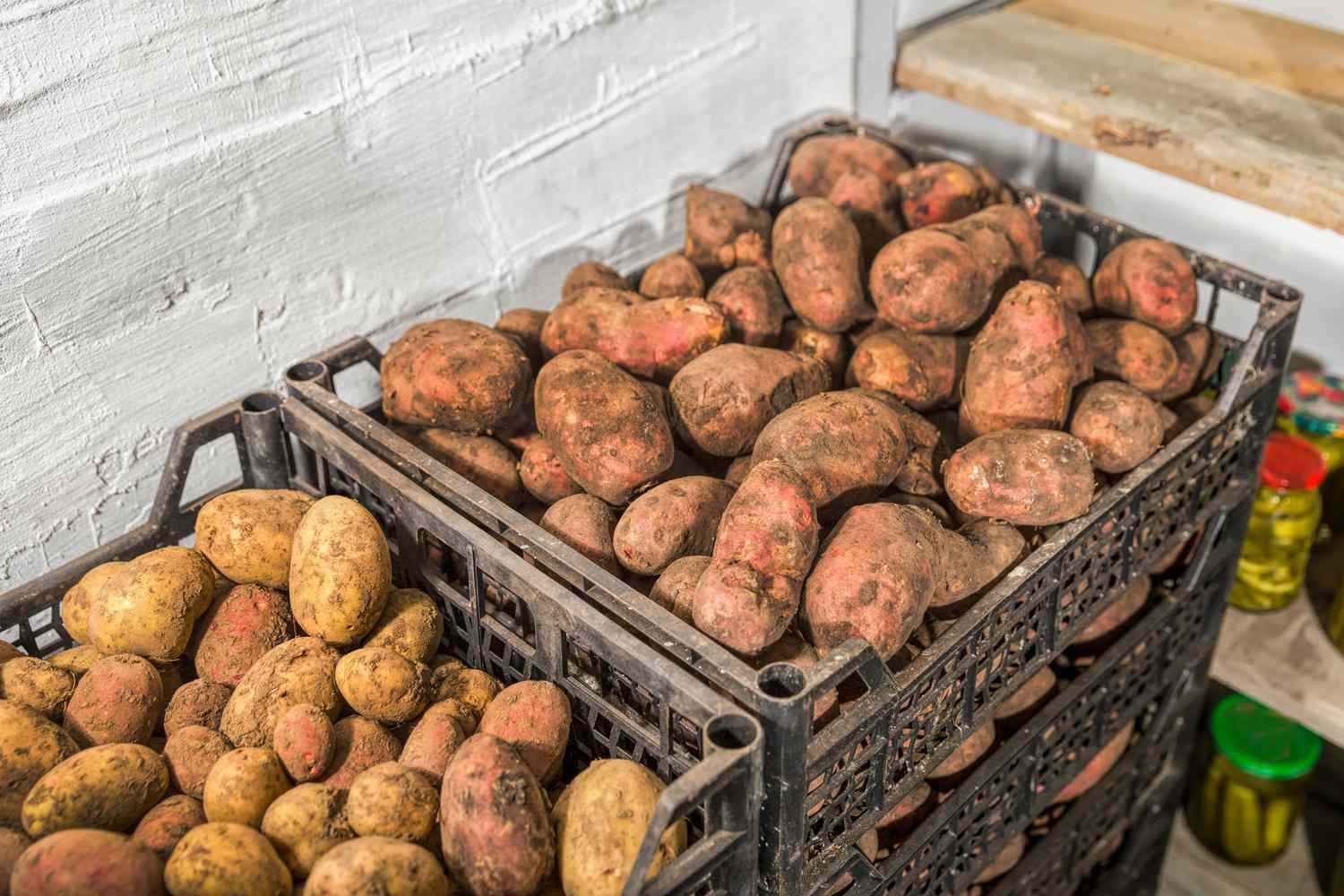

Latest News
How To Keep Vegetables Fresh Longer Without Fridge
Modified: January 22, 2024
Discover the latest news on how to keep vegetables fresh longer without a fridge. Learn simple and effective tips to preserve the freshness of your vegetables for extended periods.
(Many of the links in this article redirect to a specific reviewed product. Your purchase of these products through affiliate links helps to generate commission for Chicagolandgardening.com, at no extra cost. Learn more)
Table of Contents
- Introduction
- Best Storage Practices
- Storing Leafy Greens
- Storing Root Vegetables
- Storing Fresh Herbs
- Storing Tomatoes
- Storing Cruciferous Vegetables
- Storing Cucumbers
- Storing Onions and Garlic
- Storing Bell Peppers
- Storing Avocados
- Storing Potatoes
- Storing Carrots
- Storing Beets
- Storing Celery
- Storing Asparagus
- Storing Mushrooms
- Storing Broccoli and Cauliflower
- Storing Green Beans
- Storing Zucchini and Squash
- Conclusion
Introduction
Keeping vegetables fresh for an extended period of time can be quite challenging, especially without the use of a refrigerator. Whether you have limited fridge space or are looking for alternative ways to store your vegetables, there are several effective strategies you can employ. By following simple storage practices and utilizing the right techniques, you can significantly extend the shelf life of your vegetables, ensuring that they stay fresh and crisp for days or even weeks.
Proper storage not only helps to maintain the quality and flavor of your vegetables but also reduces food waste. When vegetables are stored correctly, they retain their nutritional value and taste, saving you money and the hassle of frequent grocery shopping.
In this article, we will explore the best practices for keeping various types of vegetables fresh without relying on refrigeration. Whether you have leafy greens, root vegetables, fresh herbs, tomatoes, or other popular vegetables, we’ve got you covered. We will discuss valuable tips and techniques that will help you store your produce properly to maximize its freshness and longevity.
It’s important to note that while these storage methods can prolong the life of your vegetables, they may not completely replace the need for a refrigerator. However, they can be a great alternative if you’re dealing with limited space or want to reduce your dependence on refrigeration for environmental or energy-saving reasons.
So, let’s dive in and discover the best ways to keep your vegetables fresh without relying solely on a fridge.
Best Storage Practices
When it comes to storing vegetables without a fridge, there are a few general practices that you should keep in mind to ensure optimal freshness and longevity. These practices apply to most vegetables and will help you maintain their quality:
- Keep them dry: Moisture can promote the growth of bacteria and cause vegetables to spoil quickly. Before storing, make sure your vegetables are completely dry. If they’re wet, gently pat them dry with a paper towel.
- Avoid bruising: Handle your vegetables with care to prevent bruising, which can lead to faster spoilage. Avoid dropping or tossing them around, especially delicate varieties like tomatoes or leafy greens.
- Separate ethylene producers: Some fruits and vegetables produce a gas called ethylene, which can speed up the ripening process and cause nearby vegetables to spoil quicker. To avoid this, store ethylene producers, such as apples, bananas, and tomatoes, separately from other vegetables.
- Inspect regularly: Regularly check your vegetables for any signs of spoilage. Remove any rotting or damaged pieces promptly to prevent them from affecting the rest of your stash.
- Use proper storage containers: Opt for breathable storage containers or bags, such as mesh bags or paper bags, that allow for good air circulation. Avoid using plastic bags, as they can trap moisture and speed up spoilage.
- Store in a cool, dark place: Find a cool spot in your home, away from direct sunlight and heat sources, to store your vegetables. A basement, cellar, or pantry can be ideal for this purpose.
By following these general practices, you can create an environment conducive to keeping your vegetables fresh and extend their shelf life. Now let’s explore specific storage techniques for different types of vegetables to ensure optimal freshness and flavor.
Storing Leafy Greens
Leafy greens, such as lettuce, spinach, kale, and Swiss chard, are delicate and prone to wilting and spoilage. To keep them fresh without a fridge, follow these tips:
- Remove any damaged leaves: Before storing, remove any damaged or wilted leaves from your leafy greens.
- Rinse and dry: Wash your greens gently under cold water to remove any dirt or debris. Shake off excess moisture and pat them dry with a clean kitchen towel or a salad spinner.
- Wrap in paper towel: Place your leafy greens on a paper towel and wrap them loosely. This helps absorb excess moisture and prevents wilting. Alternatively, you can store them in a breathable produce bag or wrap them in a damp paper towel.
- Store in a container: Place the wrapped greens in an airtight container or resealable bag. Make sure to leave some room for air circulation to prevent excess moisture buildup.
- Store in a cool place: Find a cool spot in your kitchen, such as a cupboard or a shelf, away from heat sources and direct sunlight. If the weather is hot, you can also store them in a shaded area outdoors.
- Check moisture levels: Regularly check the moisture levels of the paper towel or produce bag. If it becomes damp, replace it with a fresh one to prevent mold and spoilage.
By following these steps, you can keep your leafy greens fresh for several days. Remember to check them regularly and consume them before they show signs of wilting or spoilage. Leafy greens are best enjoyed when they are still crisp and vibrant.
Storing Root Vegetables
Root vegetables like carrots, beets, and potatoes are sturdy and can be stored without a fridge with proper care. Here are some tips to keep them fresh:
- Remove tops: For vegetables like carrots and beets, remove the leafy tops before storing. The tops can draw moisture from the root vegetables, causing them to wilt faster.
- Clean and dry: Gently scrub the dirt off the vegetables under cold water. Allow them to air dry completely. Excess moisture can lead to rot, so ensure they are dry before storage.
- Choose the right storage container: Opt for breathable containers or bags, like paper or mesh bags, to store root vegetables. Avoid plastic bags as they can trap moisture.
- Separate different types: Keep different root vegetables separate as they may release moisture and affect each other’s freshness. Store them in individual bags or containers.
- Store in a cool, dark place: Find a cool spot, like a basement or cupboard, away from direct sunlight and heat sources. Ideal temperature ranges from 32 to 50 degrees Fahrenheit (0 to 10 degrees Celsius).
- Avoid storing near fruits: Fruits produce ethylene gas that can accelerate the ripening process of root vegetables. Store them separately to prevent premature spoilage.
- Check regularly: Inspect your root vegetables regularly and remove any spoiling or rotting ones promptly to prevent the spread of decay.
Following these steps will help extend the shelf life of your root vegetables. Keep in mind that some root vegetables, like onions and garlic, have different storage requirements, which we will explore in dedicated sections.
Storing Fresh Herbs
Fresh herbs, such as basil, cilantro, parsley, and mint, can elevate the flavor of your dishes. To keep them fresh without a fridge, consider the following storage techniques:
- Trim the stems: Remove any wilted or discolored leaves from the stems of your herbs.
- Place in water: Fill a glass or jar with a few inches of water and place the herb stems inside. Make sure to submerge only the stems and not the leaves.
- Cover loosely: To maintain humidity, loosely cover the herbs with a plastic bag or place a plastic container upside down over them. Leave some room for the herbs to breathe.
- Store in a cool place: Find a cool spot in your kitchen, away from direct sunlight and heat. An herb pot on a windowsill can also work well, as long as it doesn’t get too hot.
- Change water regularly: Every couple of days, change the water in the glass or jar to prevent stagnation and prolong the freshness of the herbs.
By following these steps, you can enjoy the flavors and aromas of fresh herbs for a longer period. Ensure that you use them within a week or two, as they will start to lose their potency over time.
Alternatively, you can also dry herbs for longer-term storage. Hang herb bundles upside down in a dry, well-ventilated area until they are completely dried out. Store them in airtight containers in a cool, dark place for later use.
Storing Tomatoes
Tomatoes are a staple in many dishes and can be stored without refrigeration while maintaining their flavor and texture. Follow these tips to keep your tomatoes fresh:
- Handle with care: Tomatoes are delicate, so handle them gently to avoid bruising or squishing.
- Separate from other produce: Store tomatoes separately from other fruits and vegetables, as they produce ethylene gas that can accelerate the ripening process of nearby produce.
- Avoid direct sunlight: Place tomatoes in a cool spot away from direct sunlight, as excessive heat can cause them to ripen too quickly and spoil.
- Store stem side up: Keep tomatoes with the stem side facing up. This helps prevent moisture loss and prolongs their freshness.
- Don’t wash before storing: Avoid washing tomatoes before storing them, as moisture can lead to faster spoilage. Instead, wash them right before you are ready to use them.
- Inspect and remove any blemished tomatoes: Regularly check your tomatoes for any signs of rotting or mold. Remove any blemished tomatoes to prevent the decay from spreading to others.
If your tomatoes are ripe and you want to slow down the ripening process, you can store them in a cool location, such as a root cellar or basement. Keep in mind that the ideal temperature range for storing ripe tomatoes is around 55 degrees Fahrenheit (13 degrees Celsius).
By following these practices, you can enjoy the delicious taste of fresh tomatoes for a longer period, even without refrigeration. Remember to consume them within a few days as their flavor and texture will gradually diminish over time.
Storing Cruciferous Vegetables
Cruciferous vegetables, such as broccoli, cauliflower, and cabbage, can be stored without refrigeration if done correctly. Here are some guidelines to keep these vegetables fresh:
- Trim and remove outer leaves: Trim the stems and remove any damaged outer leaves from the vegetables.
- Rinse and dry: Rinse the vegetables under cold water and pat them dry to remove any dirt and moisture.
- Wrap in a damp towel: Wrap the vegetables loosely in a damp (not dripping wet) cloth or paper towel. This helps maintain moisture and prevent wilting.
- Store in a breathable bag or container: Place the wrapped vegetables in a breathable bag or container, such as a produce bag or a perforated plastic bag.
- Keep in a cool place: Find a cool spot, like a cellar or pantry, away from direct sunlight and heat sources. Make sure the storage area is well-ventilated.
- Check regularly: Periodically check the vegetables for any signs of spoilage. Remove any wilted or rotting pieces to prevent them from affecting the rest.
Cruciferous vegetables can tolerate slightly higher temperatures compared to leafy greens. However, keep in mind that they still benefit from cooler storage conditions to maintain their crispness and nutritional value.
It’s worth noting that while these storage tips can help extend the freshness of cruciferous vegetables, they are best consumed within a few days or a week for optimal flavor and texture.
Storing Cucumbers
Cucumbers are refreshing and versatile vegetables, and they can be stored without refrigeration to maintain their crispness. Here are some tips for storing cucumbers:
- Keep them dry: Cucumbers are prone to moisture, so ensure they are completely dry before storage. Gently wipe them with a clean cloth or paper towel if needed.
- Wrap in a dry towel: Wrap each cucumber individually or place them in a single layer in a dry cloth or paper towel. This helps absorb excess moisture and prevents them from becoming slimy.
- Place in a breathable container: Store the wrapped cucumbers in a breathable container, such as a mesh bag or a loosely sealed plastic bag with holes.
- Store in a cool spot: Find a cool area in your kitchen or pantry away from direct sunlight. Avoid placing them near heat sources like the oven or stove.
- Check regularly: Regularly inspect the cucumbers for any signs of spoilage. Remove any soft or moldy cucumbers to prevent the spread of decay.
It’s important to note that cucumbers stored without refrigeration might not have the same longevity as those stored in the fridge. Check them frequently and consume them within a few days for the best taste and texture.
If you have an abundance of cucumbers that you want to store for a longer period, consider pickling them. Pickled cucumbers can be stored in jars in a cool, dark place for several weeks or even months.
By following these storage practices, you can enjoy fresh and crisp cucumbers even without refrigeration. Incorporate them into salads, sandwiches, or enjoy them as a refreshing snack on a hot day.
Storing Onions and Garlic
Onions and garlic are kitchen essentials that add flavor and depth to various dishes. When it comes to storing these bulbs, it’s essential to provide them with the right conditions to ensure their longevity. Here are some tips for storing onions and garlic without the need for refrigeration:
- Keep them dry: Onions and garlic need to be stored in a dry environment. After purchasing or harvesting, allow them to dry out thoroughly by placing them in a well-ventilated area for a few days.
- Avoid moisture and sunlight: Store onions and garlic in a cool, dry, and dark place to prevent sprouting and rotting. Avoid areas with high humidity, as it can cause mold growth.
- Separate onions and garlic: Keep onions and garlic separate during storage, as they can release moisture and gases that can accelerate spoilage. Store them in different containers or mesh bags.
- Avoid fridge storage: While the refrigerator might seem like a convenient option, it can actually promote moisture retention and cause onions and garlic to become soft and moldy. Keep them out of the fridge for best results.
- Check regularly: Regularly check your onions and garlic for any signs of spoilage. Remove any bulbs that are soft, sprouting, or showing signs of rot to prevent the spread of decay to other bulbs.
Onions and garlic stored properly can last for several weeks to a few months, depending on the variety and freshness at the time of purchase or harvest. Make sure to monitor them regularly and use any sprouting or softening bulbs first.
If you find that you have an excess supply of onions and garlic, you can also consider preserving them through various methods such as drying, freezing, or pickling. These methods can extend their shelf life, allowing you to enjoy their flavors and benefits for a longer period.
By following these storage practices, you can ensure that your onions and garlic remain in prime condition, ready to enhance your culinary creations whenever you need them.
Storing Bell Peppers
Bell peppers are vibrant and versatile vegetables that can be stored without refrigeration if done correctly. By following these tips, you can keep your bell peppers fresh and flavorful for longer:
- Choose fresh peppers: Select bell peppers that are firm, smooth, and without any soft spots or blemishes. Fresh peppers will have a vibrant color.
- Avoid washing before storage: It’s best to avoid washing bell peppers before storing them, as moisture can lead to faster spoilage. Wait to wash them just before you use them.
- Keep them dry: Moisture promotes spoilage, so make sure your bell peppers are dry before storing. If they are damp, gently pat them dry with a paper towel.
- Wrap in a paper towel: Wrap each bell pepper individually in a dry paper towel. This helps absorb excess moisture and prevents them from becoming mushy.
- Store in a breathable bag or container: Place the wrapped bell peppers in a breathable bag or container, such as a mesh bag or a perforated plastic bag. Avoid sealing them in an airtight container to prevent moisture buildup.
- Find a cool spot: Store bell peppers in a cool area away from direct sunlight and heat sources. A pantry or a cellar can be ideal for this purpose.
- Check regularly: Regularly inspect your bell peppers for any signs of mold or rot. Remove any spoiled peppers to prevent the spread of decay.
Following these steps will help maintain the quality of your bell peppers and extend their shelf life. They should remain firm and flavorful for several days, allowing you to incorporate them into your favorite recipes.
If you have excess bell peppers that you’re unable to consume before they start to deteriorate, consider freezing them. Wash, seed, and cut the peppers into slices or dice them before sealing them in airtight containers or freezer bags. Frozen bell peppers can be used in cooked dishes like stir-fries or soups.
By implementing these storage techniques, you can enjoy the crispness and sweetness of bell peppers for an extended time, even without the need for refrigeration.
Storing Avocados
Avocados are a nutritious and delicious fruit that can be stored without refrigeration until they are ripe. Here are some tips to help you store avocados:
- Determine ripeness: To store avocados, it’s crucial to know their ripeness. Gently squeeze the fruit in the palm of your hand. Ripe avocados should yield to gentle pressure but not feel mushy or overly soft.
- Separate unripe avocados: If you have unripe avocados, you can keep them at room temperature until they reach your desired ripeness. Placing them in a paper bag with a banana or apple can hasten the ripening process.
- Refrigerate ripe avocados: Once avocados are ripe, you can slow down the ripening process by placing them in the refrigerator. This will help them stay fresh for a few extra days.
- Use lemon juice: If you have cut avocados that you want to store, brush the exposed flesh with lemon juice or olive oil to prevent browning. Then, tightly wrap the halves in plastic wrap or place them in an airtight container.
- Leave the pit in place: When storing a halved avocado, keep the pit intact. This can help slow down the browning process.
- Inspect regularly: Check your stored avocados regularly and use them promptly once they reach your desired ripeness. Overripe avocados can quickly deteriorate and become unusable.
Remember that avocados ripen faster in warmer temperatures and slower in cooler temperatures. If you want to speed up the ripening process, place them in a paper bag with a ripe banana or apple. Conversely, if you want to slow it down, store them in the refrigerator.
Keep in mind that once cut, avocados start to deteriorate quickly. It’s best to consume them as soon as possible or store them properly using lemon juice or oil to minimize oxidation and browning.
By following these storage tips, you can enjoy perfectly ripe avocados whenever you’re ready to eat them, all without the need for immediate refrigeration.
Storing Potatoes
Potatoes are a versatile and staple ingredient in many households, and they can be stored without refrigeration to maintain their quality and taste. Here are some tips for storing potatoes:
- Choose the right potatoes: Select firm, unblemished potatoes with smooth skins for storage. Avoid potatoes with cuts, bruises, or signs of decay.
- Handle with care: Potatoes are sensitive to rough handling, so gently place them in your storage container or bag to minimize bruising.
- Keep them in a cool, dark place: Store potatoes in a cool spot with temperatures around 45 to 50 degrees Fahrenheit (7 to 10 degrees Celsius). Avoid exposing them to direct sunlight, as it can cause sprouting and greening.
- Avoid moisture and light: Moisture and light can promote sprouting and spoilage. Therefore, store potatoes in a dry and dark environment.
- Use breathable storage containers: Opt for containers or bags that allow for air circulation, such as mesh bags or paper bags. Avoid using plastic bags that can trap moisture and lead to decay.
- Inspect regularly: Check stored potatoes regularly for any signs of decay, sprouting, or softening. Remove any spoiling potatoes promptly to prevent the spread of rot.
- Keep away from ethylene producers: Potatoes are sensitive to ethylene gas, which is emitted by some fruits. Store potatoes away from ethylene-producing fruits such as apples, bananas, and pears.
It’s important to note that while potatoes can be stored without refrigeration, they do have a limited shelf life. Regularly check your potatoes and use any sprouting or softening ones first. Additionally, avoid washing potatoes before storing them, as moisture can lead to spoilage. Instead, wash them right before cooking or using them.
By following these storage practices, you can prolong the freshness and quality of your potatoes. Incorporate them into various dishes, from creamy mashed potatoes to crispy roasted potatoes, even without the need for immediate refrigeration.
Storing Carrots
Carrots are versatile root vegetables that can be stored without refrigeration to maintain their freshness and nutritional value. Here are some tips to help you store carrots effectively:
- Remove the tops: Cut off the green leafy tops of the carrots before storing. The tops draw moisture from the roots, causing them to wilt faster.
- Don’t wash before storage: Avoid washing carrots before storage, as moisture can lead to faster spoilage. Brush off any excess dirt with a soft brush or cloth instead.
- Keep them dry: Make sure the carrots are thoroughly dry before storing. Moisture can cause carrots to become slimy or moldy.
- Wrap in a paper towel: Wrap the carrots in a paper towel to help absorb excess moisture and maintain their crispness.
- Store in a breathable bag: Place the wrapped carrots in a breathable bag, such as a mesh bag or a perforated plastic bag. This allows for air circulation and helps prevent moisture buildup.
- Find a cool and dark spot: Store carrots in a cool area, ideally with temperatures around 32 to 40 degrees Fahrenheit (0 to 4 degrees Celsius). Keep them away from direct sunlight and heat sources.
- Check regularly: Regularly inspect the stored carrots for any signs of spoilage. Remove any soft or moldy carrots promptly to prevent the spread of decay.
By following these storage tips, you can extend the shelf life of your carrots and maintain their crisp texture and sweet flavor. Properly stored carrots can last for several weeks, allowing you to enjoy them in various dishes, such as salads, stir-fries, or roasted vegetable medleys.
If you have excess carrots that you’re unable to consume before they start to soften or become less fresh, consider slicing or grating them and freezing them for later use in soups, stews, or baked goods.
With proper storage, you can always have fresh and crunchy carrots on hand to add a healthy touch to your meals.
Storing Beets
Beets are vibrant and nutritious root vegetables that can be stored without refrigeration to maintain their taste and texture. To store beets properly, consider the following tips:
- Remove the leaves: Cut off the leafy greens from the beet roots, leaving about an inch of the stem attached. The greens draw moisture from the roots and can cause them to wilt faster.
- Don’t wash before storage: Avoid washing beets before storing them, as moisture can lead to faster spoilage. Brush off any excess dirt gently with a soft brush or cloth.
- Keep them dry: Make sure the beets are dry before storage. Moisture encourages rotting and deterioration.
- Wrap individually: Wrap each beet individually in a paper towel or place them in paper bags. This helps absorb excess moisture and prevents the beets from losing their crispness.
- Store in a cool, dark place: Find a cool spot with temperatures around 32 to 40 degrees Fahrenheit (0 to 4 degrees Celsius). Avoid storing them near heat sources or in direct sunlight.
- Check regularly: Regularly inspect your stored beets for any signs of decay or mold. Remove any beets showing spoilage to prevent it from spreading to others.
By following these storage techniques, you can prolong the shelf life of your beets. Properly stored beets can last for several weeks, allowing you to enjoy their earthy flavors and vibrant colors in salads, roasted dishes, or even pickled.
If you’re unable to consume all your beets before they start to soften or lose their freshness, consider preserving them. You can pickle them, grate them for freezing, or even make beet chips for a delicious and nutritious snack.
With the right storage methods, you can have fresh and flavorful beets readily available, adding a colorful and nutritious element to your meals.
Storing Celery
Celery is a versatile and crispy vegetable that can be stored without refrigeration while maintaining its freshness and crunch. Follow these tips to store celery properly:
- Trim the ends: Cut off the bottom of the celery stalks to remove any dry or damaged parts.
- Rinse and dry: Rinse the celery stalks under cold water to remove any dirt. Pat them dry with a clean towel or paper towel.
- Wrap in aluminum foil or plastic wrap: Individually wrap the celery stalks in aluminum foil or plastic wrap. This helps retain moisture and prevents the celery from drying out.
- Place in a breathable bag: Put the wrapped celery stalks in a breathable bag, such as a produce bag or a perforated plastic bag. This keeps the celery crispy and allows for air circulation.
- Keep in a cool place: Find a cool spot in your kitchen or pantry away from heat sources and direct sunlight. A cupboard or a shelf works well for this purpose.
- Check regularly: Periodically check the celery stalks for any signs of wilting or rot. Remove any damaged or spoiling sections to preserve the freshness of the remaining stalks.
By following these storage tips, you can extend the shelf life of celery and enjoy its crunchiness in salads, soups, or as a healthy snack. Properly stored celery can last for up to a week, retaining its flavors and nutritional benefits.
For longer-term storage, you can also consider cutting the celery stalks into smaller pieces and freezing them. Frozen celery works well in cooked dishes like stir-fries or casseroles, but keep in mind that the texture may change slightly after freezing.
With the right storage techniques, you can have fresh and crispy celery readily available for your culinary creations.
Storing Asparagus
Asparagus is a delicate and flavorful vegetable that can be stored without refrigeration while preserving its freshness and taste. Proper storage techniques are key to maintaining its quality. Here’s how to store asparagus effectively:
- Trim the ends: Trim about an inch from the bottom of the asparagus stalks. This removes the woody and tough part.
- Place in water: Fill a jar or a container with a small amount of water, about an inch. Place the trimmed asparagus stalks in the jar, making sure the ends are submerged in water.
- Cover with a plastic bag: Loosely cover the asparagus with a plastic bag, creating a tent-like structure to maintain humidity. Secure the bag around the container or jar to prevent moisture loss.
- Store in a cool spot: Place the container or jar in a cool area of your kitchen, away from direct sunlight and heat sources. A north-facing windowsill or a cool pantry are suitable options.
- Change the water: Every couple of days, change the water in the jar to prevent it from becoming stagnant and potentially promoting spoilage.
- Check regularly: Periodically inspect the asparagus for any signs of deterioration or mold. Remove any discolored or soft stalks to prevent the spread of spoilage.
By following these storage methods, you can extend the shelf life of your asparagus and enjoy its tender texture and fresh flavor. Properly stored asparagus can last for several days or up to a week while maintaining its quality.
If you find yourself with excess asparagus that you’re unable to consume before it starts to deteriorate, blanching and freezing can be a suitable option. Blanch the asparagus in boiling water for a couple of minutes, then transfer it to an ice bath to stop the cooking process. Once cooled, pat the asparagus dry, pack it in freezer bags or containers, and freeze for later use. Frozen asparagus is perfect for soups, stir-fries, or side dishes.
By employing these storage techniques, you can savor the delicious taste of asparagus for longer periods, even without the need for immediate refrigeration. Enjoy this versatile vegetable by incorporating it into various recipes and dishes.
Storing Mushrooms
Mushrooms are delicate and highly perishable, making proper storage crucial to maintain their freshness and flavor. To extend the shelf life of mushrooms without refrigeration, follow these guidelines:
- Handle gently: Mushrooms are fragile, so handle them with care to avoid bruising or damaging their delicate texture.
- Avoid washing: Mushrooms are like sponges and absorb moisture easily, leading to faster spoilage. Avoid washing them before storage to prevent them from becoming slimy.
- Remove packaging: If the mushrooms come packaged in plastic wrap or containers, remove them from their packaging. Excess moisture can accumulate, causing mold growth.
- Store in a breathable container: Place the mushrooms in a paper bag or a loosely covered container to allow for air circulation. This helps prevent the buildup of excess moisture.
- Keep in a cool and dark place: Find a cool spot in your kitchen, pantry, or cupboard away from direct sunlight and heat sources. A temperature range of 45 to 55 degrees Fahrenheit (7 to 13 degrees Celsius) is ideal.
- Check regularly: Mushrooms are prone to decay, so regularly inspect them for any signs of sliminess, mold, or dark spots. Remove any spoiled mushrooms promptly to prevent the spread of spoilage.
It’s important to note that mushrooms stored without refrigeration have a shorter shelf life compared to refrigerated ones. Therefore, it’s best to use them within a few days of purchase or harvesting for optimal freshness and quality.
If you have an excess supply of mushrooms, consider preserving them by drying or freezing. Drying mushrooms involves slicing them and placing them in a single layer on a baking sheet in a low-temperature oven until they are dry and slightly crispy. Frozen mushrooms can be sliced or left whole and stored in airtight containers or freezer bags.
By applying these storage techniques, you can enjoy the rich flavors and unique textures of mushrooms for an extended period, even without immediate refrigeration. Incorporate them into various dishes, such as soups, stir-fries, or pasta sauces, to enhance your culinary creations.
Storing Broccoli and Cauliflower
Broccoli and cauliflower are nutritious and versatile vegetables that can be stored without refrigeration if done correctly. Proper storage techniques are essential to maintain their freshness and prolong their shelf life. Here’s how to store broccoli and cauliflower effectively:
- Trim and remove leaves: Trim the tough stems of broccoli and cauliflower and remove any excess leaves.
- Rinse and dry: Rinse the vegetables under cold water to remove any dirt or debris. Shake off excess moisture and pat them dry with a clean towel or paper towel.
- Wrap in a damp paper towel: Wrap the broccoli and cauliflower heads individually or together in a damp paper towel. This helps retain moisture and prevent them from drying out.
- Place in a breathable bag or container: Store the wrapped vegetables in a breathable bag or container, such as a perforated plastic bag or a mesh produce bag. This allows for air circulation and prevents moisture buildup.
- Store in a cool area: Find a cool spot in your kitchen or pantry, away from direct sunlight and heat sources. Aim for temperatures between 32 to 40 degrees Fahrenheit (0 to 4 degrees Celsius).
- Check regularly: Regularly inspect the broccoli and cauliflower for any signs of wilting or mold. Remove any spoiled portions promptly to prevent the spread of spoilage.
By following these storage methods, you can extend the shelf life of your broccoli and cauliflower. Properly stored, they can last for up to a week while maintaining their crispness and flavor.
If you find yourself with an excess supply that you cannot consume in time, consider blanching and freezing the vegetables. Blanch them in boiling water for a short time, then transfer them to an ice bath to halt the cooking process. Once cooled, drain and pat them dry, then place them in freezer-safe containers or bags for future use. Frozen broccoli and cauliflower are great for stir-fries, soups, or side dishes.
With the right storage techniques, you can enjoy fresh and delicious broccoli and cauliflower, adding nutritional value and texture to your meals.
Storing Green Beans
Green beans are crisp and flavorful vegetables that can be stored without refrigeration while maintaining their freshness and taste. Proper storage techniques are crucial to prolong their shelf life. Here’s how to store green beans effectively:
- Remove stems: Trim the ends of the green beans by snapping or cutting them off. Removing the stems helps to maintain freshness.
- Rinse and dry: Rinse the green beans under cool water to remove any dirt or debris. Pat them dry thoroughly with a clean towel or let them air dry completely.
- Wrap in a paper towel: Wrap the green beans in a dry paper towel to absorb excess moisture and prevent them from becoming slimy.
- Place in a breathable bag or container: Store the wrapped green beans in a breathable bag or a perforated plastic bag. Alternatively, you can use a container with ventilation holes for proper air circulation.
- Store in a cool and dark place: Find a cool spot in your kitchen or pantry, away from direct sunlight and heat sources. A temperature range of 45 to 55 degrees Fahrenheit (7 to 13 degrees Celsius) is ideal.
- Check regularly: Regularly inspect the green beans for any signs of wilting or mold. Remove any spoiled beans promptly to prevent the spread of deterioration.
By following these storage methods, you can extend the shelf life of your green beans and enjoy their crispness and flavor for up to a week. As they age, green beans may become slightly wrinkled, but they can still be used in cooking as long as they are not slimy or moldy.
If you have an excess supply that you cannot consume within a week, consider freezing them to preserve their freshness. Blanch the green beans in boiling water for a couple of minutes, then transfer them to an ice bath to cool. Drain and pat them dry before placing them in freezer bags or containers. Frozen green beans can be used in a variety of cooked dishes, such as stir-fries, soups, or casseroles.
With proper storage, you can enjoy the vibrant and satisfying taste of green beans for an extended period, adding a nutritious touch to your meals.
Storing Zucchini and Squash
Zucchini and squash are versatile and delicious vegetables that can be stored without refrigeration while maintaining their freshness and flavor. Proper storage techniques are essential to maximize their shelf life. Here’s how to store zucchini and squash effectively:
- Handle with care: Handle zucchini and squash gently to avoid bruising or damaging their delicate skin.
- Leave the skin intact: Do not wash or peel zucchini and squash before storage, as moisture can lead to faster spoiling. Keeping the skin intact helps to preserve their freshness.
- Store unwashed: Place the zucchini and squash in a breathable bag or a loosely covered container without washing them. This helps prevent moisture accumulation and prolongs their shelf life.
- Find a cool spot: Store zucchini and squash in a cool area of your kitchen or pantry, away from direct sunlight and heat sources. Aim for temperatures between 45 to 55 degrees Fahrenheit (7 to 13 degrees Celsius).
- Check regularly: Regularly inspect the zucchini and squash for any signs of softening, spotting, or mold. Remove any spoiled pieces promptly to prevent the spread of decay.
By following these storage methods, you can extend the shelf life of your zucchini and squash. Properly stored, they can last for about a week while maintaining their texture and flavor.
If you have excess zucchini and squash that you cannot consume in time, consider freezing them. Slice or dice the vegetables, blanch them in boiling water for a brief period, transfer them to an ice bath, then drain and pat them dry. Pack the blanched zucchini and squash in airtight containers or freezer bags for longer-term storage. Frozen zucchini and squash are perfect for adding to soups, stews, or stir-fries.
By utilizing proper storage techniques, you can enjoy the abundance of zucchini and squash while they’re in season and preserve their quality for future culinary creations. Incorporate them into various dishes, such as sautés, salads, or grilled preparations, to savor their deliciousness.
Conclusion
Properly storing vegetables without relying solely on refrigeration is not only practical but also helps to reduce food waste and maximize the freshness of your produce. By following the appropriate storage practices for each type of vegetable, you can extend their shelf life and enjoy their flavors and nutritional benefits for longer periods.
Whether it’s storing leafy greens, root vegetables, fresh herbs, tomatoes, cruciferous vegetables, cucumbers, onions and garlic, bell peppers, avocados, potatoes, carrots, beets, celery, asparagus, mushrooms, broccoli and cauliflower, green beans, or zucchini and squash, there are specific guidelines to ensure optimal freshness.
Remember to keep your vegetables dry, handle them with care, and separate ethylene-producing fruits to prevent premature spoilage. Use breathable containers or bags to maintain proper air circulation, store in cool and dark places, and regularly inspect your vegetables for any signs of spoilage.
It’s important to note that while these storage methods can extend the freshness and shelf life of vegetables, they may not completely replace the need for a refrigerator. Certain vegetables, especially those with shorter shelf lives, may still benefit from refrigeration to maintain their quality.
By implementing these storage practices, you can make the most of your vegetables, reduce food waste, and ensure that you always have fresh produce on hand. Enjoy the natural flavors, textures, and nutritional benefits of your vegetables while minimizing your reliance on refrigeration and maximizing their longevity. Experiment with these storage techniques and savor the bounty of fresh vegetables for longer periods without compromising their quality.

